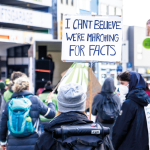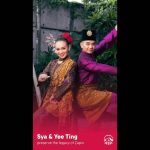
(Marketingmagazine.com.my) – Procter & Gamble Chief Brand Officer Marc Pritchard has a message for his agencies: “Frankly, your complexity should not be our problem, so we want you to make that complexity invisible,” he said during an interview at the Ad Age Digital Conference.
Pritchard was addressing the fact that because digital marketing has changed so rapidly, it has “created a whole long tail of agencies.” But as the world’s largest advertiser works to consolidate its agencies, he is seeking much “greater end-to-end integration,” he said.
Many digital agencies are still “technical in nature,” he said. But “our expectation is that over time, our agency partners, whoever we chose, are going to be able to integrate [all of the workload], so you can get the production out, the distribution out as well as the creative out.”
“It’s gone well for us,” he said. “What it has produced is the ability to reach people on a mass scale with greater precision.
“It’s improved our ROI, and what I think we are going to do is keep upgrading and continuing to grow over time.”
Procter & Gamble wants to buy 70% to 75% of its U.S. digital media programmatically by the end of this year, according to people briefed on the company’s plans.
That’s an ambitious goal for the world’s biggest media spender and sure to cause brand marketers that have resisted automated trading to reconsider. Until now P&G’s use of programmatic buying has been mainly limited to relatively small tests.
Analysts say that P&G next year plans a similar shift of mobile-ad buying to programmatic buying — auction-based systems where ads are bought and served across the web to a specific audience in real time.
The move follows a goal recently announced by American Express in an advertising-technology request for proposals to shift 100% of digital buys to programmatic (later called a “theoretical strategic thought” by AmEx VP-U.S. Media Jill Toscano).
A move by P&G would be more ground breaking. First, AmEx is largely a direct-response advertiser that can more easily monitor the immediate impact of its ads based on customer acquisition, and it has no firm stated timetable like P&G’s.
Second, it’s a leap for a brand advertiser like P&G, which sells most of its products via retailers and needs more time and advanced analytics to know whether its digital ads are producing sales.
That’s a major reason why the category has generally been more cautious about plunging into programmatic.
P&G, which declined to comment, spent $235 million of its $3.2 billion in measured media last year on internet display advertising, according to WPP’s Kantar Media, whose data don’t include mobile and some social-media advertising.
The company’s huge portfolio of consumer brands includes Tide, Charmin, Gillette, Pantene, Cascade, Crest, NyQuil and Olay.
The company traditionally has been a buyer of premium online inventory, and hitting its goal means getting publishers to make more premium inventory available for programmatic buying.
How hard that will be is debatable. Rex Briggs, CEO of marketing analytics firm Marketing Evolution, said his research has found that more premium digital inventory is available than many people think — but placed by ad networks into bundles of similar quality without the option of buying specific properties.
Generally, however, advertisers get better ability through such networks to target consumers than with traditional buying, he said.
Buying programmatically is still being resisted in many quarters in Malaysia, possibly because many still do not understand its concept and how it works.
But one exponent of this is CIMB’s CMO Muhd Adam Wee Abdullah, who has urged for it to be fully understood and implemented here.
Enter the prestigious APPIES Malaysia Marketing Awards today!
Known as the ‘TED for Marketing’, campaign entries are presented by their brand marketers or campaign creators in an interactive format comprising of a 4-minute creative reel summarising the overall marketing campaign, followed by a 6-minute oral presentation highlighting significant aspects of the campaign, and finally a Q&A with the audience.
Entrant campaigns must have run between 1 January 2015 and 29 February 2016 in any of these categories:
1. Consumer Durables
2. Consumer Services
3. Food and Beverage
4. Non-food FMCG
5. Business Services
6. Government, Cultural, Social and Environmental campaigns.
Top brands including P&G, Mondelez International, Coca-Cola, Google, IKEA, IBM,
Unilever, Amazon, Shangri-La Hotels & Resorts and Asia Pacific Breweries have
all won at the APPIES over the years. Will your Brand or Agency be next?
Download details and your Entry Kit here:
Closing Date: 31 March, 2016
All entries are to be submitted to [email protected] via file transfer protocol.
MARKETING Magazine is not responsible for the content of external sites.










